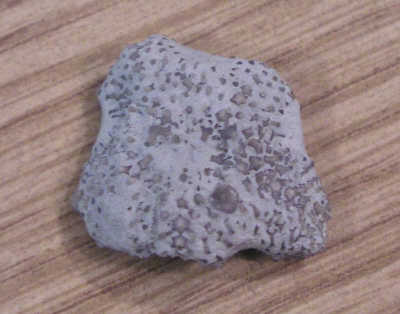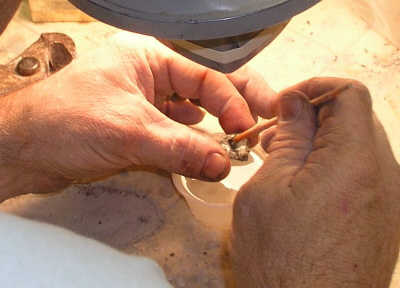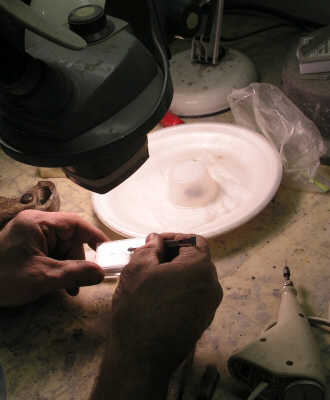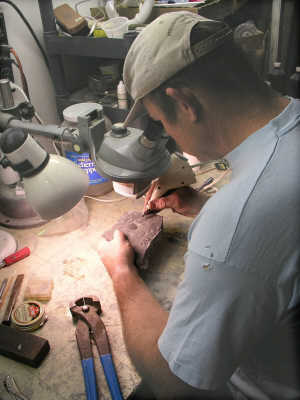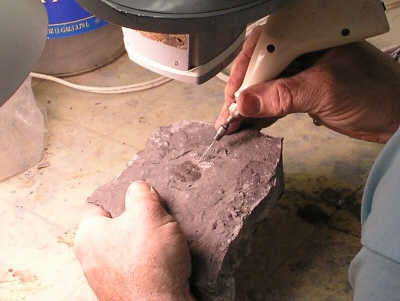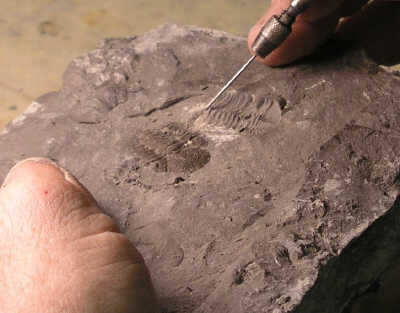Dry Dredgers Field Trip
November 22, 2003
Dan Cooper's Open House
Page 4
A Sea Star Gets a Chemical
Dan opted for a chemical process on this sturdy Echinoderm. Potasium
Hydroxide (KOA) is bought in dry flakes. You just lay a dry flake on the
specimen and the water from the air melts the caustic substance
onto the specimen. It will abraise, and eventually destroy, the minerals
which form the fossil. So be sure to limit the time KOA rests on your specimens.
An hour is usually enough to turn shale to mud.
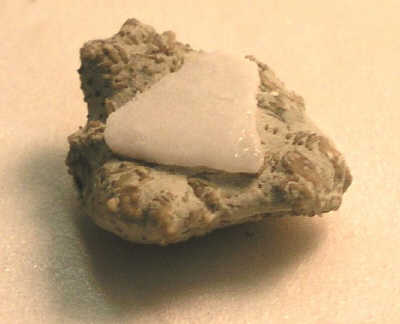
It takes about a half hour to an hour for the KOA to do it's work. Dan checked it every half hour. He placed it on a paper towel and covered it with a pill cup.
Now, here's the way it looks after the cleaning...![]()
Back Side: A little more exposure in the arms.
Cleaning a Phacops Trilobite
I think this specimen was found on the 2003 Penn Dixie Site field trip to state of New York. Dan started with the Vibro tool.
Here's the result after the air abrasive action. Besides removing microscopic
particles, it seems to give trilobites a shiny look.
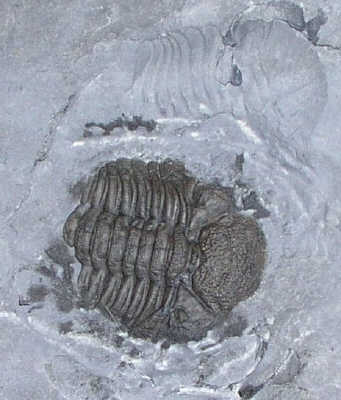
Next Page: Other Specimens Cleaned That Day
Table of Contents
Page 1: Introduction
Page 2: A Tour of Dan's Fossil Prep Lab
Page 3: A Fossil Cleaning Demonstration:
Rhombiferan
Page 4: A Seastar Gets A Chemical / Cleaning a
Phacops Trilobite
Page 5: Other Specimens Cleaned That Day
Back to the Field Trip Index
Back to the Dry Dredgers Home Page
The Dry Dredgers and individual contributors reserve the rights to all information, images, and content presented here. Permission to reproduce in any fashion, must be requested in writing to admin@drydredgers.org .
